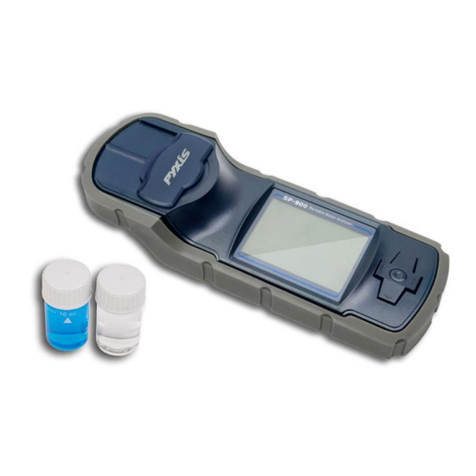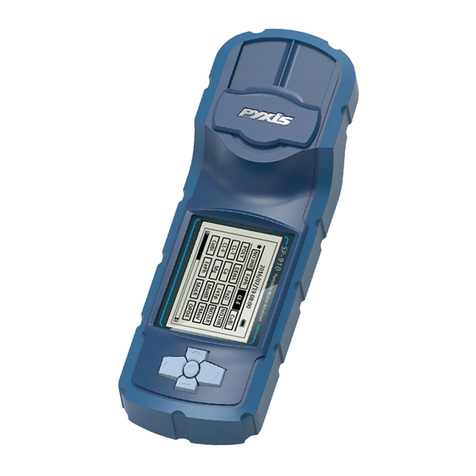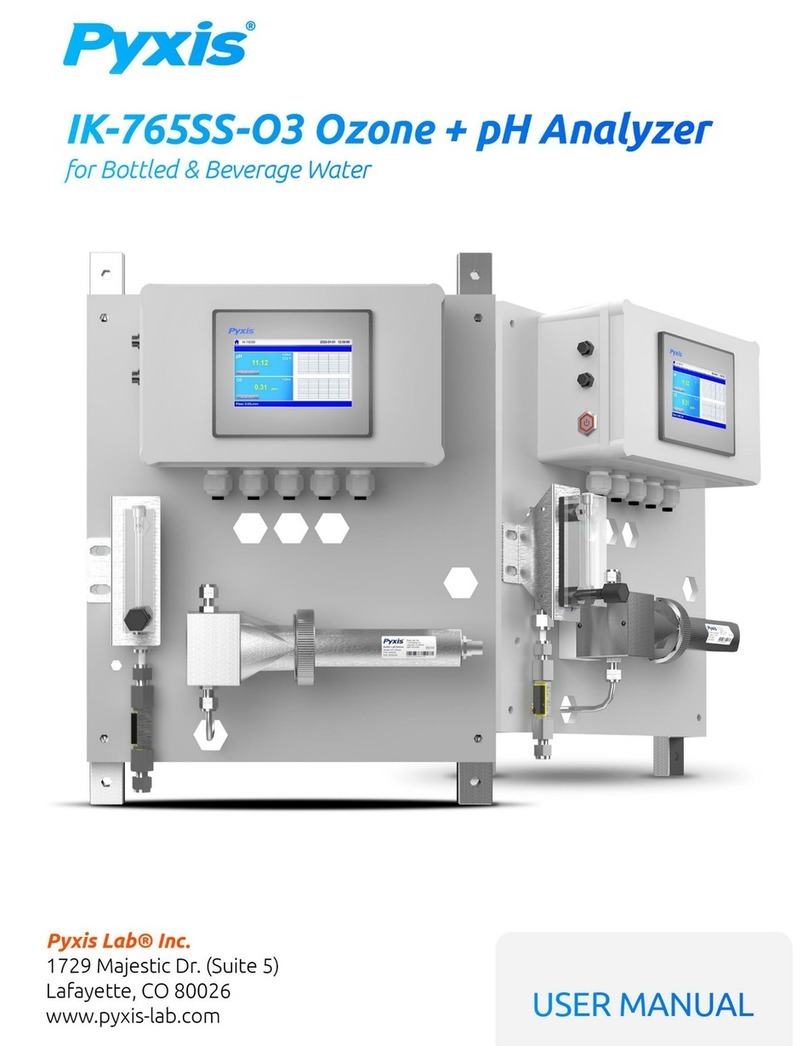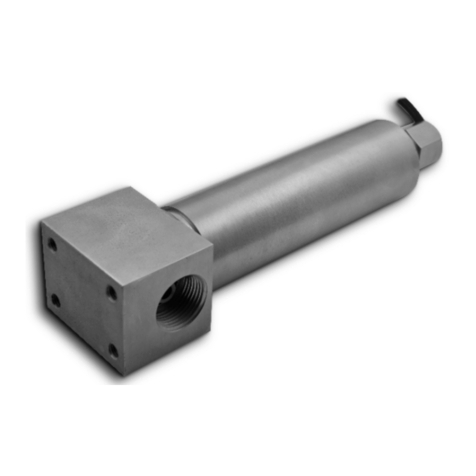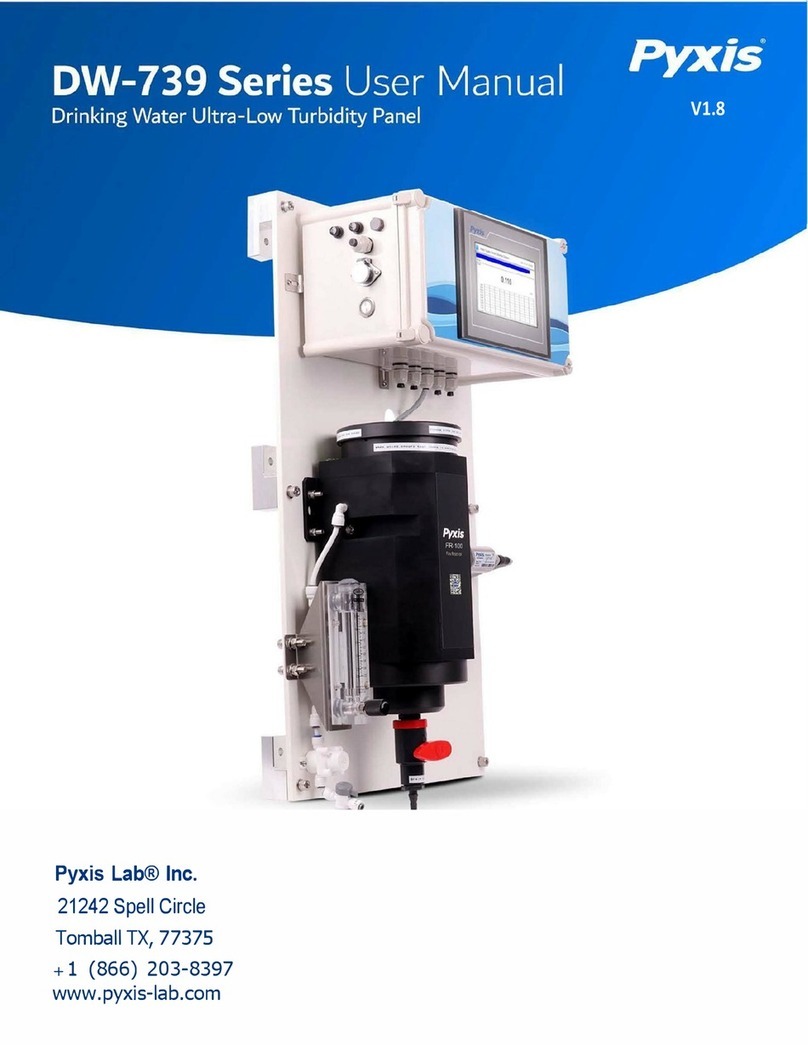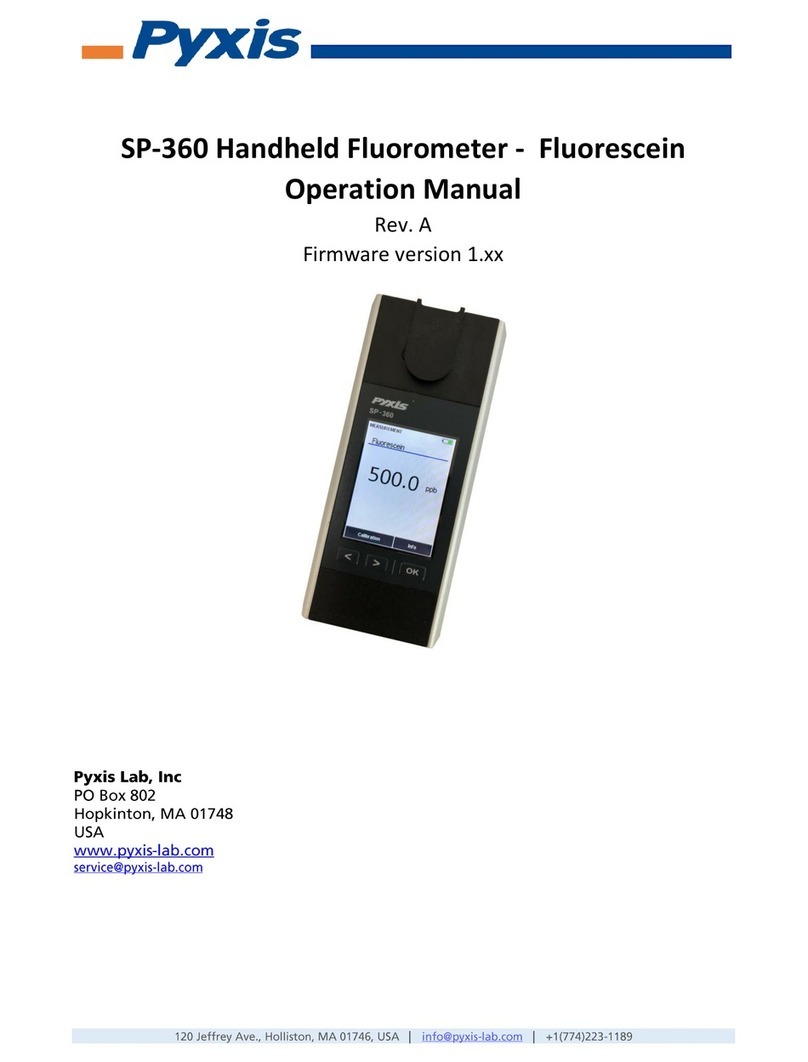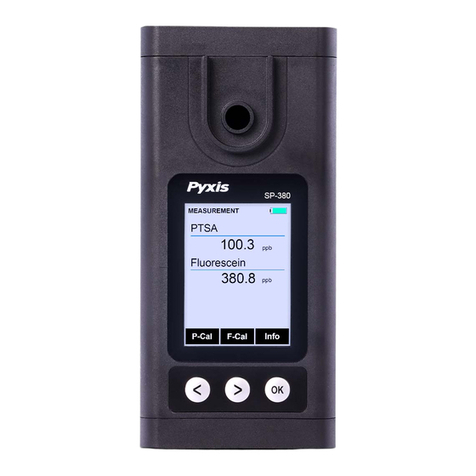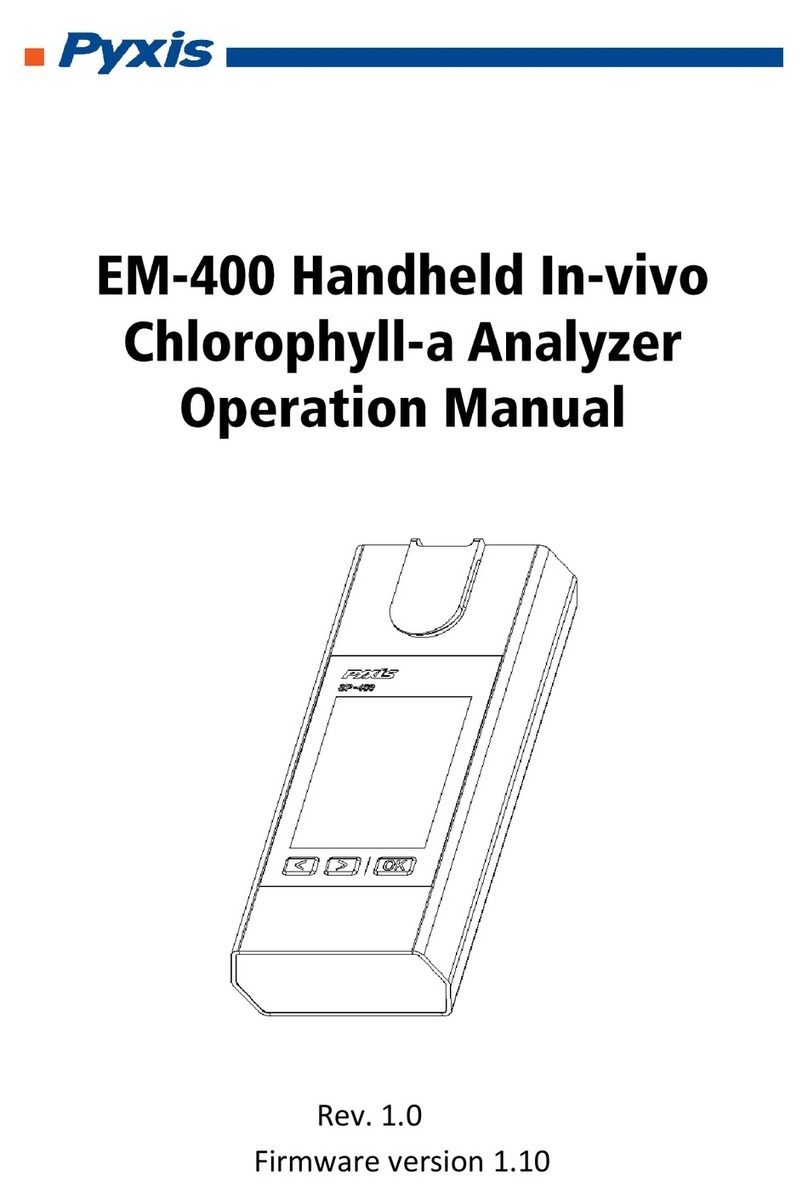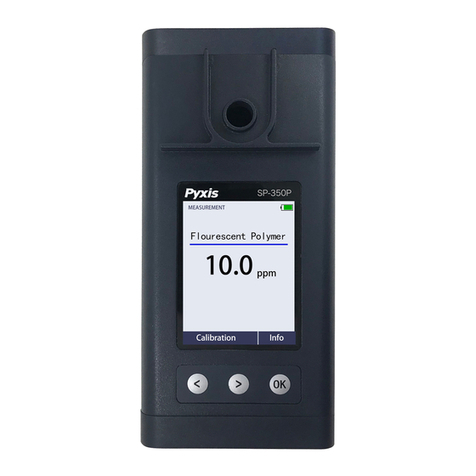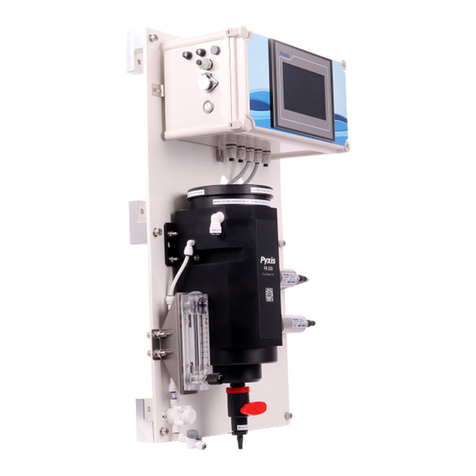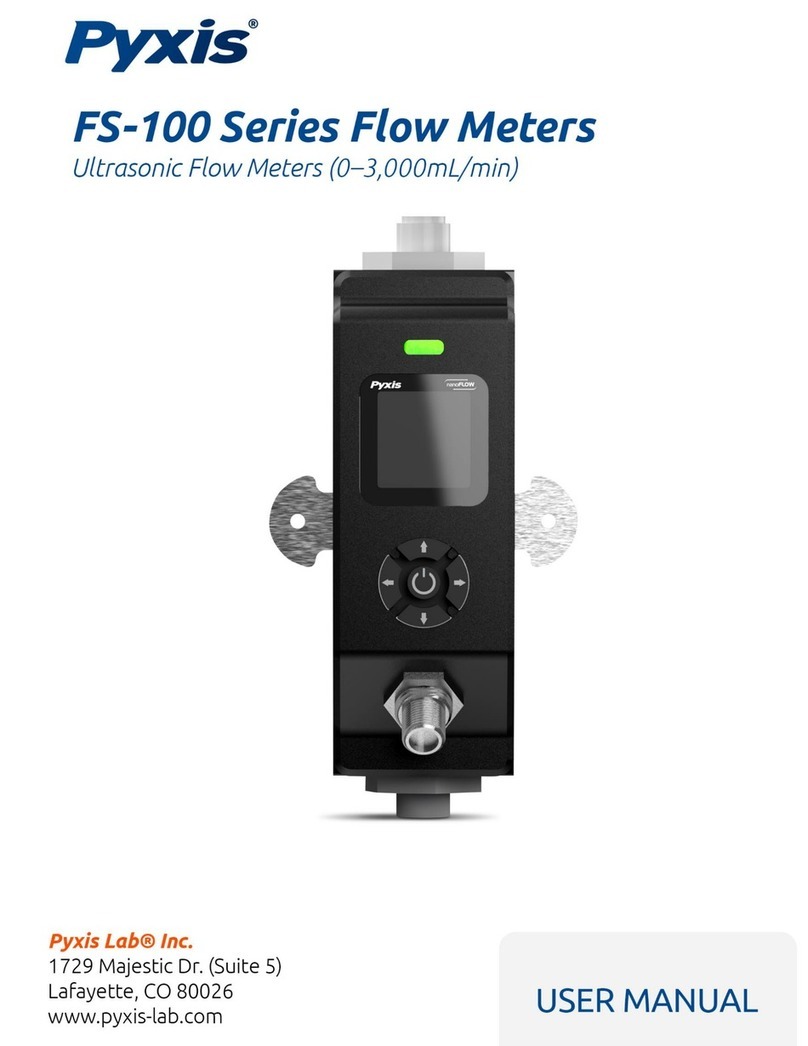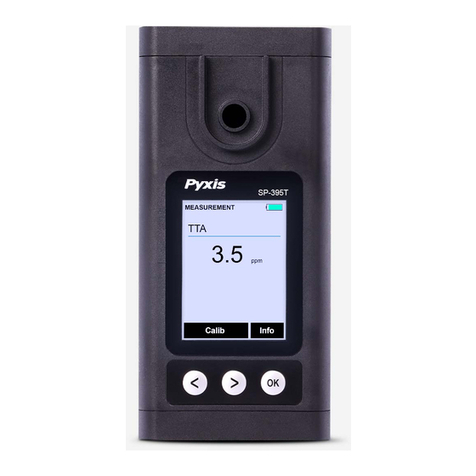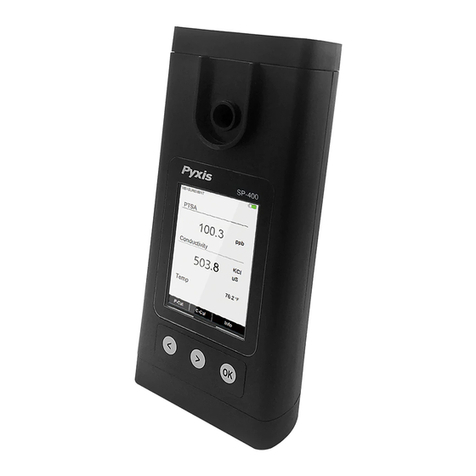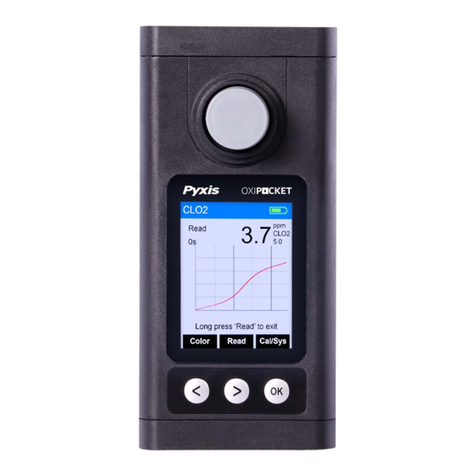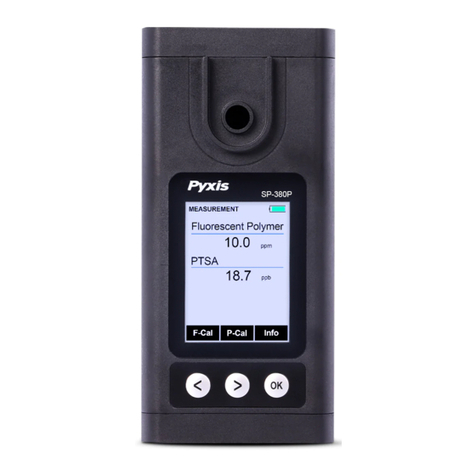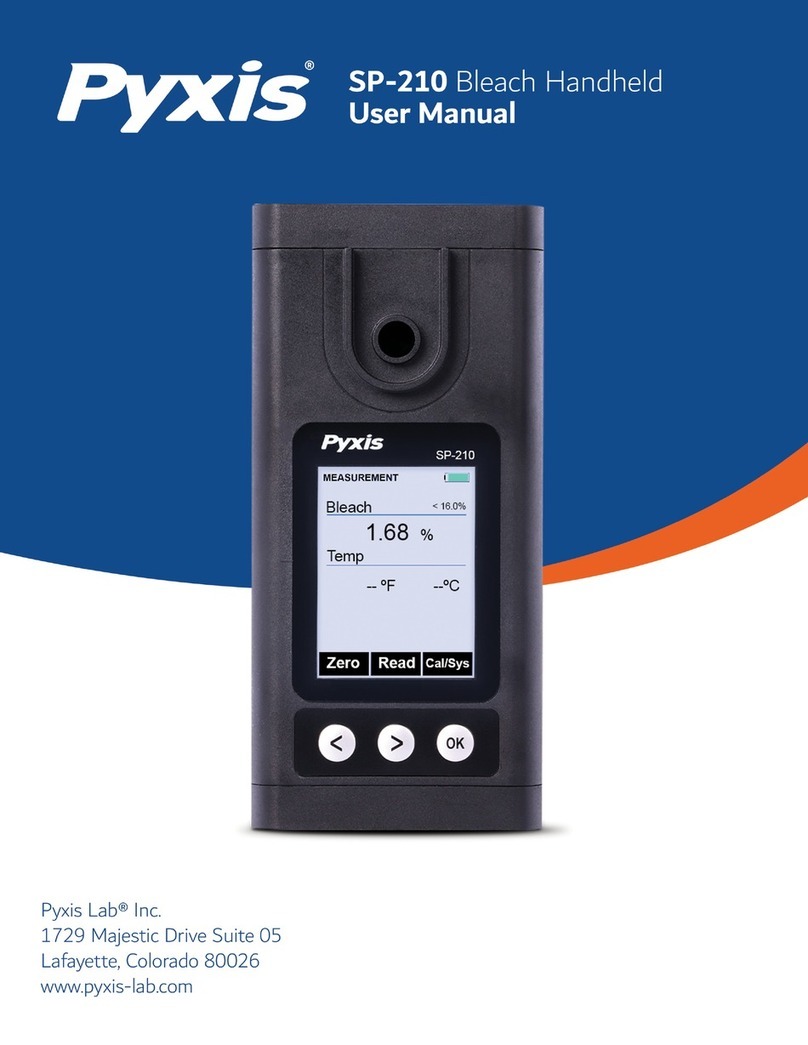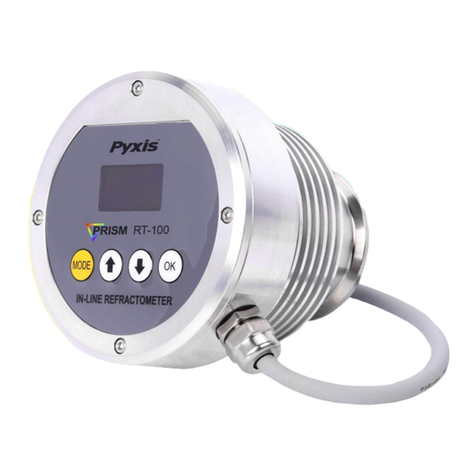i
Contents
1 General Description ................................................................................................................................... 1
1.1 Specification........................................................................................................................................ 1
1.2 Pyxis Major Features........................................................................................................................... 2
1.3 Unpackaging the Instrument .............................................................................................................. 2
1.4 Standard Accessories .......................................................................................................................... 3
1.5 Optional Accessories........................................................................................................................... 3
1.6 Sample Vial Compartment.................................................................................................................. 3
1.7 Light Shield Cover................................................................................................................................ 3
2 Start the SP-910 ......................................................................................................................................... 5
2.1. Battery Installation............................................................................................................................. 5
2.1 Description of the Navigational Control Pad ...................................................................................... 5
2.2 Turning on the SP-910......................................................................................................................... 5
2.3 Main Page ........................................................................................................................................... 6
2.4 Turning off the SP-910 ........................................................................................................................ 6
2.5 The SP-910 Auto Power off................................................................................................................. 6
2.6 Auto LCD Power Saving....................................................................................................................... 7
3 PTSA Measurement.................................................................................................................................... 7
3.1 PTSA Measurement............................................................................................................................. 7
3.2 PTSA calibration .................................................................................................................................. 7
4 Fluorescein Measurement ......................................................................................................................... 8
4.1 Fluorescein Measurement .................................................................................................................. 8
4.2 Fluorescein calibration (Firmware version before v1.0r295) ............................................................. 9
4.3 Fluorescein calibration (Firmware version v1.0r295 and after) ....................................................... 10
5 Colorimetric Measurement...................................................................................................................... 11
5.1 Supported Methods.......................................................................................................................... 11
5.2 Select a Method................................................................................................................................ 14
5.3 Single Timing Step Method............................................................................................................... 15
5.4 Single-Vial Procedure........................................................................................................................ 15
5.5 Two-Vial Methods............................................................................................................................. 15
5.6 Multiple Timing Steps Method ......................................................................................................... 16

